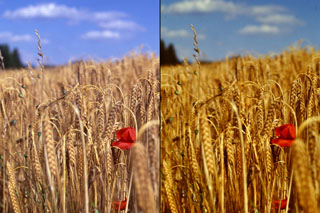

When you take pictures with your iPhone, you can geotag them automatically. Press Release: gps4cam, the app that adds geotagging to every camera
Gps4cam review download#
The gps4cam app can be downloaded from Apple’s App Store for $1.99.Ĭlick here for more information and to download the app
Gps4cam review Pc#
The app logs the location details as users travel around, then creates a QR-Code that allows this data to be easily synchronized with photos using the associated 'gps4cam Desktop' PC or Mac software. Sony instead took the easiest, laziest, cheapest way out by removing the option.App4cam has released an updated version of its 'gps4cam' iPhone app that allows users to geotag images from any digital cameras even when their phone doesn't have a signal. If there were technical reasons involved, what would a forward-thinking company do? Work on them and progressively improve the technology for the benefit of everyone. (BTW, don't people have smartphones in China?) If so, Sony is a wimpy company regarding human rights. Others say it was to avoid having to make 'V' and 'non-V' versions of cameras in order to more easily accommodate markets under repressive governments such as China, where GPS tracking is unwelcome. Some people hypothesize that built-in GPS wasn't fast or accurate enough or required too much battery power (which can be disproven). It can't have been due to cost or insufficient room in camera bodies because the very best implementation of Sony GPS I've ever seen is in the small and lowly HX5V and HX9V P&S cameras, which include a compass so you get not only location data, but also the direction in which the camera was pointed! True to form, Sony never publicly explained anything about their quiet removal of GPS so people can only speculate. Were there technical reasons for this, or licensing issues, or was it purely a marketing decision? I agree it does seem strange to remove a newish technological feature which provides significant capability from a range of cameras which otherwise seek to embrace the best of new technology. The whole process of transferring data from the device to the computer and geotagging the photos it's basically done in minutes for several hundreds images. It may sound a little complicated, but once you do it for the first time you will realize hot easy it really is. This is my regular workflow when I use one of my cameras without GPS (since just like you I consider geotagging an extremely useful feature). The other just transfers the recorded data in a standard file (I use. One can geotag your photos based on the info stored by the device, but I found it too complicated and cumbersome to use. The tracker is delivered with two programs. I can confirm that I had no issue using it during a 10-12 days holiday, although I cannot remember how much of its memory was filled when I got back home. Battery life is somewhere between 12 to 14 hours and it can record 40 days x 12 hours 5s.

I personally use a small dedicated GPS tracker manufactured by Qstarz. Based on my experience, whatever the developers claim, all these phone apps have a serious impact on the phone's battery which makes them not so practical to use.
Gps4cam review software#
I use a small & free piece of software working in Windows, which is called GeoSetter. You can then transfer these files to your computer and use them for geotagging.
Gps4cam review android#
There are quite a few apps both for iOS and Android that can record your position in a standard format (.kml.


 0 kommentar(er)
0 kommentar(er)
